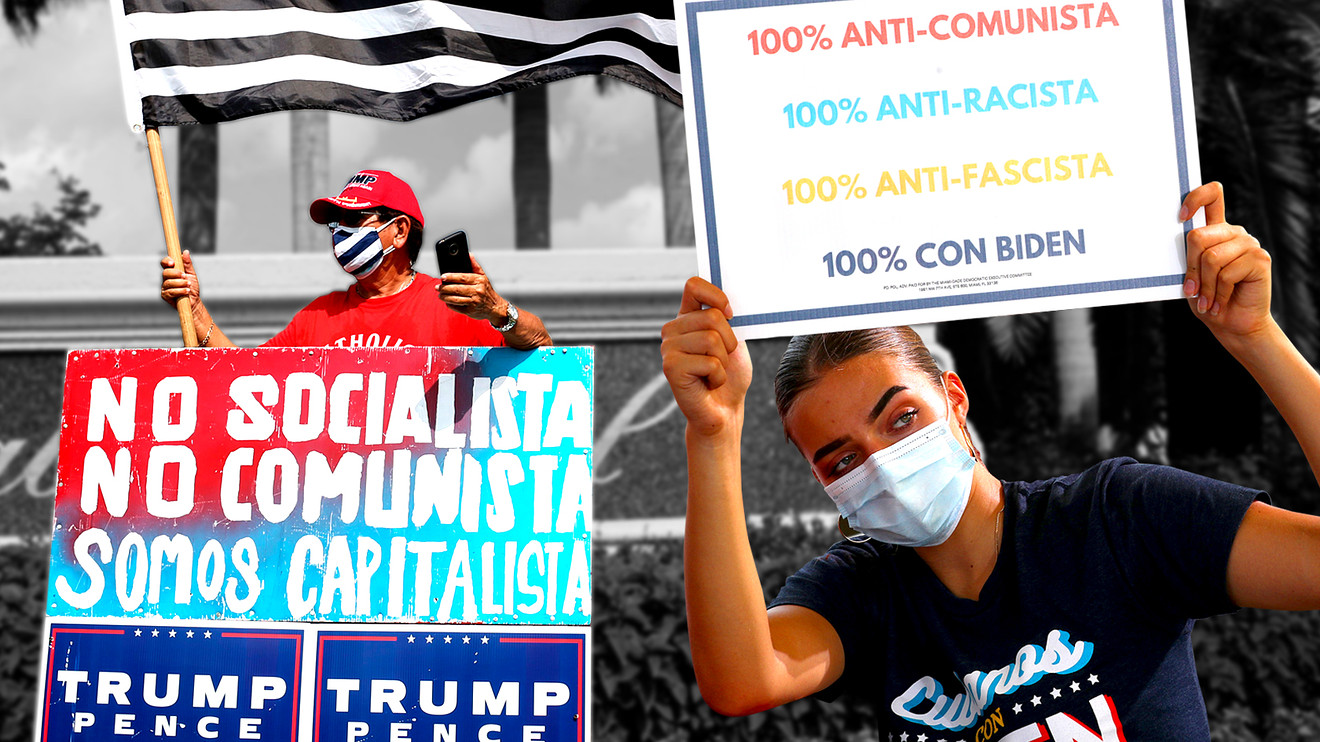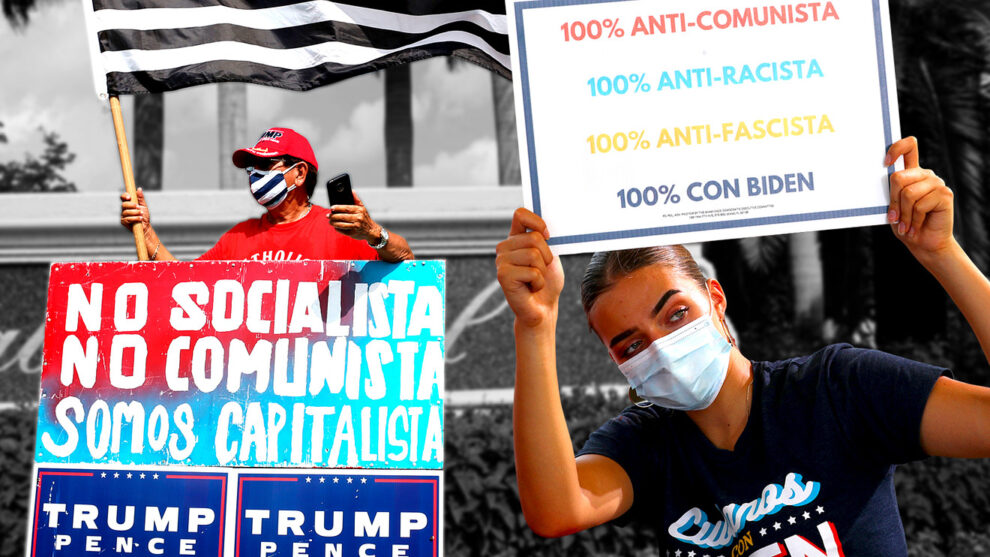
One major takeaway from the presidential election even before all the votes have been tallied: Despite pundits’ and pollsters’ discussion of the “Latino vote” or “Hispanic vote” — it was never a unified block for one candidate to win.
The U.S. Census Bureau defines a Hispanic or Latino person as someone of “Cuban, Mexican, Puerto Rican, South or Central American, or other Spanish culture or origin regardless of race.” In other words, Latino or Hispanic is a broad label encompassing roughly 61 million people of different races, countries of ancestry, economic circumstances, gender, location and other characteristics.
Those differences help explain why Hispanic voters appeared to have helped deliver Florida to President Donald Trump, while in Arizona, Latino voters likely pushed the state towards former Vice President Joe Biden.
“ ‘Essential workers in my community, my Hispanic brothers and sisters, who have been disproportionately impacted by COVID.’ ”
“I talk about it as a population and not a community,” Mark Lopez, director of global migration and demography research at Pew Research Center, said of the Hispanic or Latino population. “To call it a community suggests that it has shared values and interests. It isn’t necessarily the case.”
In fact, the labels, “Latino” or “Hispanic” are American inventions, Lopez said. “Outside of the U.S. these terms don’t resonate in the way that they do here,” he said. “The idea that we group everybody together as a single group — it’s really something that’s unique” to the U.S., Lopez said.
People like Victoria Gutierrez and Sergio Arellano illustrate that divide.
Gutierrez, a Madison, Wisc. “proud second generation Cuban American” and critical-care nurse, said those two parts of her life melded together to motivate her vote for Biden.
Gutierrez, 53, thinks the pandemic has been “mishandled completely at the federal level” and she knows “essential workers in my community, my Hispanic brothers and sisters, who have been disproportionately impacted by COVID.”
The pandemic’s flare up in Wisconsin has ratcheted up Gutierrez’s anxiety in an already-stressful job. “Is today the day that I get exposed? The day I bring it home?”
“ ‘When you look at what President Trump’s background is, how he was very business-driven and focused, that was a natural selection for me.’ ”
Then there’s Arellano, 36, who has been around business since he was a kid haggling for the best sales price at flea markets on discarded toys his father, a garbage man, kept from his route.
“When you look at what President Trump’s background is, how he was very business-driven and focused, that was a natural selection for me,” the Tucson, Ariz. business owner and military veteran said, thinking back to his 2016 vote for the president.
Arellano is now a member of the Latinos for Trump Advisory Board cast his ballot for the president again on Election Day. “The guy’s walked the talk,” Arellano said, pointing to things like the CARES act’s Paycheck Protection Program extending forgivable loans to businesses
Arellano remembers when he first registered to vote years ago and asked the local government employee taking his paperwork what the difference was between registering as a Democrat or a Republican.
“Democrats are for the poor people and Republicans are for the rich people,” he remembered her explaining. “Coming from nothing,” Arellano said the idea of prosperity sounded good to him.
That fits with the cultural upbringing of a first-generation American who was born and raised in Tucson after his parents came from the state of Sonora in Mexico. “We do not want to work for other people. We want to work for ourselves and achieve that American Dream.”
It’s a population, not a community
There are several key points of difference in the experience of Hispanic voters, according to Lopez: Country of origin — where the families of voters who identify as Latino come from — likely influences their approach to politics.
Immigrant generation — in some states, like New Mexico, Hispanic voters tend to be third-generation American, according to Lopez, while in others, like Florida, these voters may be first or second generation Americans. Race — some Latino voters identify as Afro-Caribbean, some identify as white, some as a member of an indigenous group and others, when asked, write in something else.
“There is a story about race within the population that is perhaps unique to the population but is also intertwined with race in the United States and how we think about it here,” Lopez said.
“ Hispanic residents of South Florida, ‘tend to be college-educated, tend to be professionals and tend to have higher levels of income.’ ”
Latino voters also vary widely by education level. Roughly 55% of adults in the U.S. of Venezuelan origin and about 43% of those of Argentine origin have at least a bachelor’s degree, compared to 10% of Guatemalans and Salvadorans, according to Pew.
In addition, there’s wide disparity in the economic circumstances of Latino voters. The median income of Argentines is $68,000, according to Pew, while the median income of Hondurans is $41,000 and Mexicans is $49,000.
Hispanic residents of South Florida, “tend to be college-educated, tend to be professionals and tend to have higher levels of income,” Lopez said. “It’s notable how distinct South Florida is in its economic characteristics.” That may explain in part, why Trump over-performed in places like Miami-Dade County. Voters earning $100,000 or more were more likely to vote Republican this election than those with lower incomes, according to exit polling.
Meanwhile, Latinos were harder hit than other groups by the coronavirus pandemic, which was a top concern of Biden voters, according to exit polls.
“As a broad demographic, Latinos have higher rates of infection, higher rates of death, higher rates of job loss and higher rates of small business closure than any other community,” said Noel Andrés Poyo, executive drirector of the National Association for Latino Community Asset Builders. “The numbers are awful.” The Great Recession took a similar outsized toll on Latinos, who are still recovering economically from that downturn.
A diversity of political perspectives
The Latino community’s diversity plays out in several politically relevant ways, said Heather Silber Mohamed, associate professor of political science at Clark University the author of “The New Americans? Immigration, Protest and the Politics of Latino Identity.”
For example, the fact that the Latino population in South Florida — which is dominated by people of Cuban and Venezuelan origin — helped to deliver the state to Trump is a “classic example” of the way voters’ experience of politics in their country of origin or ancestry influences their experience in the U.S.
“Many of these voters fled to the U.S. to escape leaders who identified with these traditions,” Silber Mohamed said, of communism or socialism. “Trump’s campaign has really been able to build on these fears.”
In addition, the region or state in which Latino voters reside also likely influences their political opinions. For example, in 2010, Arizona Latino voters were mobilized surrounding S.B. 1070, a law that was seen as geared towards immigrant profiling, Silber Mohamad said. That tradition of political activism seems to have carried through to this election and what appears to be support for Biden among Hispanic voters in Arizona.
Latino voters are also increasingly likely to identify as evangelical Christian, Silber Mohamed said, but it’s still too early to tell how that might influence their voting decisions. “For this election I’ll be really curious to see once we have more data that we can look at, whether the trends of white evangelicals hold within the Latino population,” she said.
How Biden and Trump attempted to reach Latino voters
Despite surprise from some that Hispanic voters helped deliver Florida to Trump, in the lead up to this election there was already a recognition of the diversity of Hispanic voters, said Adrian Pantoja, a professor of political studies at Pitzer College.
“The days of broad-based Latino appeals are dead,” said Pantoja, who is also a senior analyst at Latino Decisions, a Latino political opinion research organization. “Micro-targeting is in, but don’t assume that one party or one candidate has an advantage.”
During the campaign, the Biden team reportedly dispatched Mexican, Puerto Rican and other volunteers to call voters from their same country of origin with the goal of mobilizing them around shared concerns. “This is one of those elections where we are waiting to see how did this play out? How did this strategy pay dividends? There’s still a lot of dust in the air,” Pantoja said.
The Trump campaign also appeared to have used a targeted strategy among Latino voters, Pantoja said, but instead of basing it on country of origin, it was based on gender. When Latino men were contacted, it was more likely to be by the Republican Party than women, according to poll data from NALEO Education Fund and Latino Decisions. Forty-seven percent of men who were contacted said they heard from someone from the GOP while 28% of women who were contacted said they heard from the Republican party.
“Men in general found Trump’s message appealing,” Pantoja said. Indeed, exit polls indicate that Trump had a slight edge with male voters, while Biden was more popular among women. “One of things I emphasize is that Latinos are like other American voters.”









